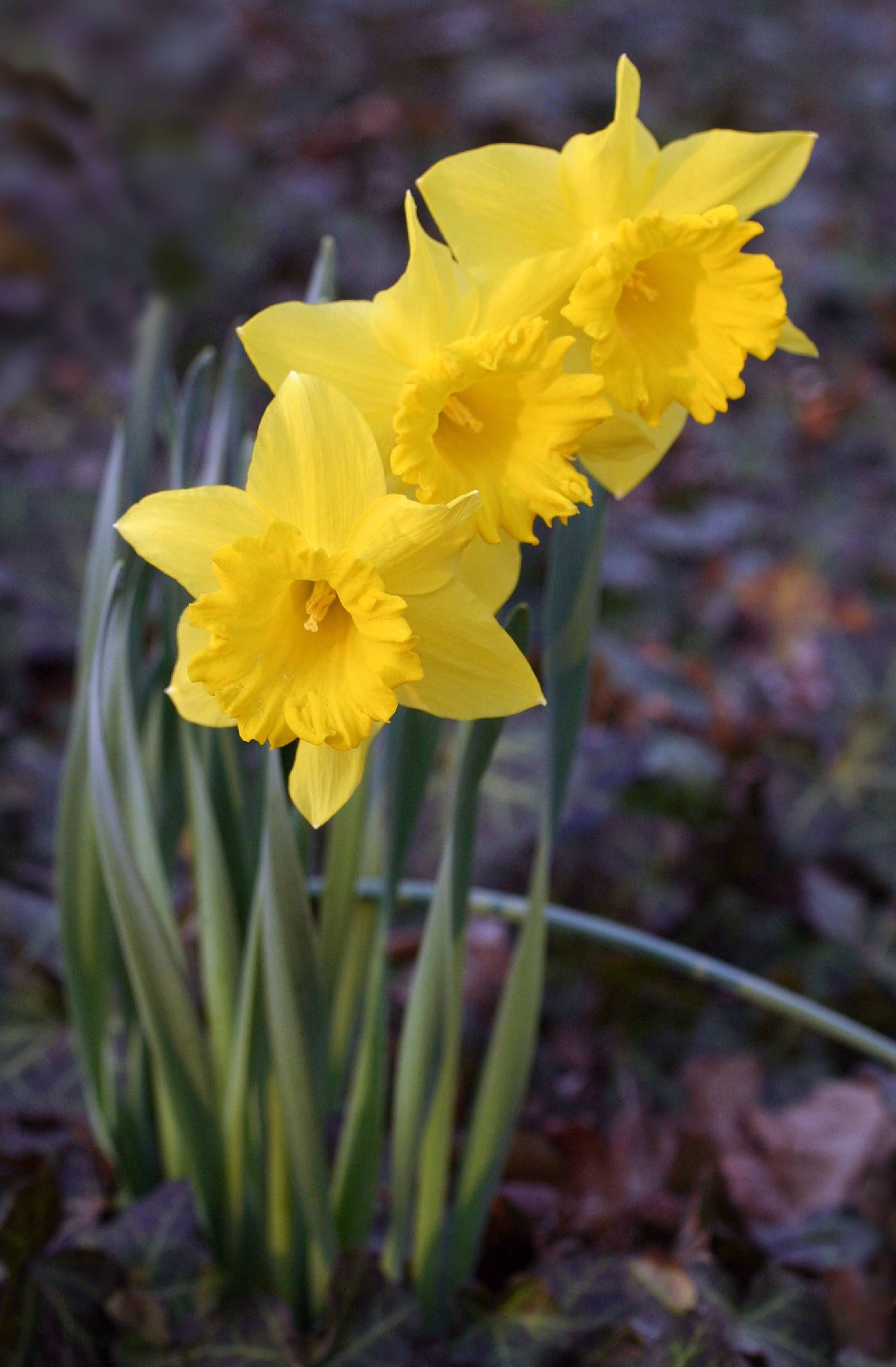Narcissus
|
Family: Amaryllidaceae |
Herbs perennial, scapose, from ovoid, tunicate bulbs. Leaves (1-)several; blade linear to ligulate, flat to semiterete, fleshy. Inflorescences umbellate in clusters of 2-20, or solitary, spathaceous; spathe 1-valved, enclosing buds, membranous or papery. Flowers pedicellate or sessile, erect or declinate, often fragrant; tepals 6, connate proximally, distinct and reflexed to ascending distally, yellow and/or white; perianth tube surmounted by a cupular to trumpetlike corona with margins often frilled; stamens 6, epitepalous, often of 2 lengths; filaments separate from corona; anthers basifixed; ovary inferior, 3-locular; style often exserted; stigma minutely 3-lobed. Fruits capsular, 3-locular, papery to leathery, dehiscence loculidical. Seeds numerous, subglobose, often with elaiosomes; testa black. x = 7, 11. Narcissus species and especially a vast array of their natural hybrids and garden cultivars are among the most popular spring flowers (A. Huxley et al. 1992). Many species are extremely variable due to horticultural selection and naturalization. Besides the following species, many of the cultivars also may persist around old gardens, although they never fully naturalize. All parts of the plant are poisonous, especially the bulb, due to phenanthridine alkaloids such as narcissine and lycorine (G. E. Burrows and R. J. Tyrl 2001).
Perianth slenderly tubular at base, with broad, widely spreading segments; corona saucer-shaped, of the same or different color, entire to erose or lobed; stamens inserted on the perianth-tube within the corona; ovary inferior, with numerous ovules in each of the 3 locules; perennial scapose herbs from coated bulbs, with narrow, usually erect, basal lvs and erect scapes bearing 1-few conspicuous fls. 60, Europe, Medit., w. Asia. Many of the plants in cult. reflect hybridization among diverse spp. Gleason, Henry A. & Cronquist, Arthur J. 1991. Manual of vascular plants of northeastern United States and adjacent Canada. lxxv + 910 pp. ©The New York Botanical Garden. All rights reserved. Used by permission. |

